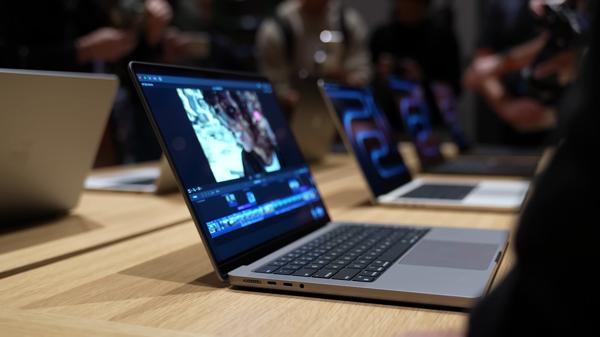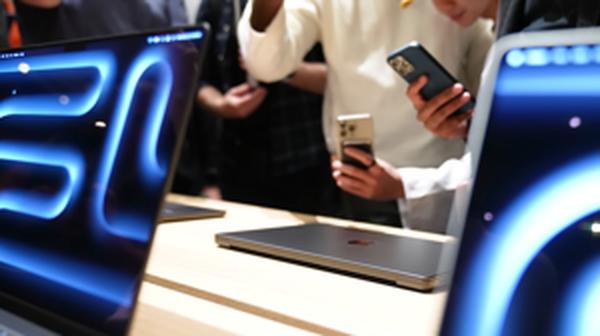Possibly cellular modems in new Macbooks: my thoughts (2023)
Introduction
I've always been interestinted in a MacBook with cellular connectivity. It's an idea that promises the ultimate freedom for the modern professional—unrestricted access to the digital world. Over the years, my work-from-anywhere lifestyle made me wonder why this innovation was taking so long.
The Evolution of Connectivity in Personal Computing

The notion of a MacBook equipped with cellular connectivity isn't new; enthusiasts and professionals alike have long toyed with the idea of being able to connect to the internet without being tethered to a Wi-Fi network. I remember stumbling upon old threads discussing prototypes from over a decade ago. The concept was enticing, even then—imagine the freedom of pulling out your laptop in a moving car and enjoying the same connectivity as your smartphone.
In my observations, the evolution of connectivity in personal computing has often been a push and pull between practicality and aspiration. When I first heard about Apple's potential foray into cellular MacBooks, I was skeptical but intrigued. My experiences with ThinkPad models sporting cellular bands already demonstrated a world where work wasn't confined to coffee shop corners or the inconsistent connections of public Wi-Fi.
However, I can't shake off some of the concerns around the idea. There's the impact on battery life, for one. Would the inclusion of a cellular radio diminish the MacBook's stellar battery performance, especially in areas with poor signal? While Apple's battery management chops are impressive, the laws of physics aren't easily bent—even by Apple's design team.
Then, there's the matter of additional contracts, as some have brought up. Would the convenience of an always-connected MacBook justify another line on my monthly bill? The advantage of seamless connectivity is tempting, but I find it hard to jump into what seems like a luxury rather than a necessity.
Despite the drawbacks, I can't deny the allure. My phone often serves as a hotspot, a lifeline to the cloud when Wi-Fi falters, but hotspotting has never been truly seamless. It's also a consideration that an always-connected laptop could benefit specific user groups—remote workers, frequent travelers, journalists in the field.
Strides have been made in the right direction, if rumors are to be believed. Apple's acquisition of Intel's modem division suggests an alignment of stars; their vertical integration expertise could well lead to a MacBook with minimally invasive trade-offs in terms of design and power consumption. It seems likely that eSIMs, now common in iPads and Apple Watches, would be the path forward, negating the need for a SIM tray on the sleek chassis of a MacBook.
All things considered, the evolution of connectivity in our laptops looks to mirror that of our phones. Much like the slow but sure death of the ethernet port, I foresee a future where being offline is the exception, not the rule. While it's true that most places offer Wi-Fi, the reliability and security of these networks are not always up to par. With Apple's known penchant for providing secure and closed systems, the integration of cellular modems might just be the feature that moves the needle, particularly as we navigate towards a future where our devices are increasingly cloud-dependent.
The integration of cellular technology into the MacBook could indeed be a game-changer, transforming where and how we use our laptops. The key for Apple—and what I'm curious to watch unfold—is how they will strike the right balance between the freedom this new connectivity offers and the potential concessions users will have to make.
Practical Implications of Cellular-Enabled MacBooks

The prospect of cellular-enabled MacBooks stokes considerable excitement for those of us who crave constant connectivity, evoking days of wandering with an iPad equipped with LTE while maintaining the full power of macOS. I'm intrigued by the notion of stripping away the dependency on spotty Wi-Fi networks in coffee shops and libraries, or the constant dance of tethering with a phone that chews through the battery like there's no tomorrow.
For someone like me, who values the immediacy of opening a laptop and diving straight into work without the tedious setup of a hotspot, the convenience factor cannot be overstated. I recall times when I've had to scramble for a Wi-Fi network before a critical video call while traveling. A cellular MacBook could be a godsend in those situations, connecting seamlessly just as our phones do. It wouldn’t just be about convenience; it would be about reliability and productivity.
Technically speaking, integrating cellular capabilities in a MacBook could mean leveraging more powerful antennas, considering the size of the laptop. Better reception and potentially faster internet speeds aren’t just pipe dreams—they're feasible outcomes if Apple nails the design and integration. And given Apple's penchant for sleek, unobtrusive design, I suspect any potential aesthetic sacrifice would be minimal.
On the flip side, there must be considerations around battery life and how a built-in cellular modem could impact it. No one wants to trade off the MacBook's stellar battery performance for the sake of connectivity. I keep imagining a scenario where I’m working on a critical task far from an outlet, watching my battery drain at an accelerated pace because of the cellular antenna hunting for a signal. The optimist in me, however, believes that Apple's in-house modem expertise could finagle an efficient solution, as seen in their work with custom silicon like the M-series chips.
Then there’s the issue of added cost. Will there be a hefty premium tacked onto the already steep price of a MacBook simply for the luxury of LTE or 5G connectivity? And from a practical standpoint, wouldn’t there now be a need to fork out additional cash for a separate data plan? I shudder to think of the potential cost but, if implemented, I can foresee business professionals justifying the expense for the sheer uptick in productivity.
However, not everyone needs such mobility. Many users are content with their home Wi-Fi or occasional hotspot use. The decision to integrate cellular modems into MacBooks wouldn't be about casting a wider net to catch all consumers—it’d be about snagging the subset who really stand to benefit from it. Field workers, travelers, and those living in areas with unreliable broadband could find a newfound sense of digital liberation.
In the realm of practical implications, cellular MacBooks could democratize access to high-speed internet for those involved in remote education or jobs lacking infrastructure. I recall reading about initiatives to bridge the digital divide (Internet Equity Initiative), and it's fathomable that devices like cellular MacBooks could play a role in such efforts, albeit the cost factor looms large.
The bottom line is that while the integration of cellular modems into MacBooks introduces potential game-changing benefits around connectivity and accessibility, we must navigate the trade-offs between cost, battery life, and the necessity of such a feature. For more insights on the latest from Apple, you might find my experience with the Apple MacBook Air M2 (2023) particularly telling. As someone who revels in seamless tech experiences, I'm leaning toward optimism, eagerly awaiting the practical rollout of this technology, provided the challenges are astutely managed.
Future Prospects and Privacy Considerations

The idea of MacBooks with integrated cellular modems isn't new; Apple has been toying with this concept for quite some time. Actual implementation feels not only technologically feasible but imminent. It’s a logical step in our always-connected culture and can dramatically change how and where we work. Cellular MacBooks would bring genuine utility in many professional contexts, especially for those in the field or remote areas. It's the difference between reliability and the frustration of Wi-Fi hunting.
As a techie in an urban setting, I seldom find myself without Wi-Fi. Yet, I can appreciate the allure of a cellular MacBook for business travelers, journalists, and other digital nomads. The convenience factor is undeniable. The thought of opening a MacBook and being connected anywhere without fumbling with hotspots is appealing. I'm equally excited about the potential to use Apple's in-house 5G modems, a sign of self-reliance and innovation (as hinted in their acquisition of Intel's modem business).
Nevertheless, the enthusiasm is not without reservations. The cost of additional data plans and potential impact on battery life are important considerations. While MacBooks do have larger batteries, there's no denying the added strain of a cellular radio—especially in areas with poor cell coverage. This can sap battery life, offsetting the convenience factor. Moreover, the integration of an eSIM is almost a given, considering Apple's current trajectory. This would streamline the process but also means we should brace ourselves for the inevitable upcharge in the MacBook's price tag, which is already steep for many.
Privacy implications also weigh heavily on my mind. An always-connected device does raise concerns, and we shouldn't overlook these. The location tracking and potential for backdoor internet access, even with Wi-Fi disabled, adds a layer of surveillance that may not sit well with all users. However, numerous devices, including iPhones, already offer this functionality, so one could argue that the ship has sailed in terms of ubiquitous connectivity.
There's also the fact that some users, myself included, enjoy having different devices with separate connectivity. It affords a sense of digital compartmentalization—an aspect that might lose its relevance with a cellular MacBook. And yet, I recognize that for organizations with remote workforces, the benefits could outweigh the drawbacks. The potential for employers to temporarily activate a cellular fallback for employees during internet outages is particularly promising.
Overall, cellular MacBooks would be a significant stride into the future of personal computing—one that solidifies the reality of an always-online presence, transcending the constraints of fixed connectivity. With high expectations for a pragmatic and elegant implementation, I am cautiously optimistic. But it’s incumbent upon prospective consumers to consider not just the convenience but also the trade-offs associated with an always-connected lifestyle. As a conclusion, it is not a question of if but when Apple will merge the portability of the MacBook with the ubiquity of cellular connectivity. And as we eagerly await the official roll-out, our collective discourse on its impact—both good and bad—remains as vibrant and dynamic as the technology itself.
Share